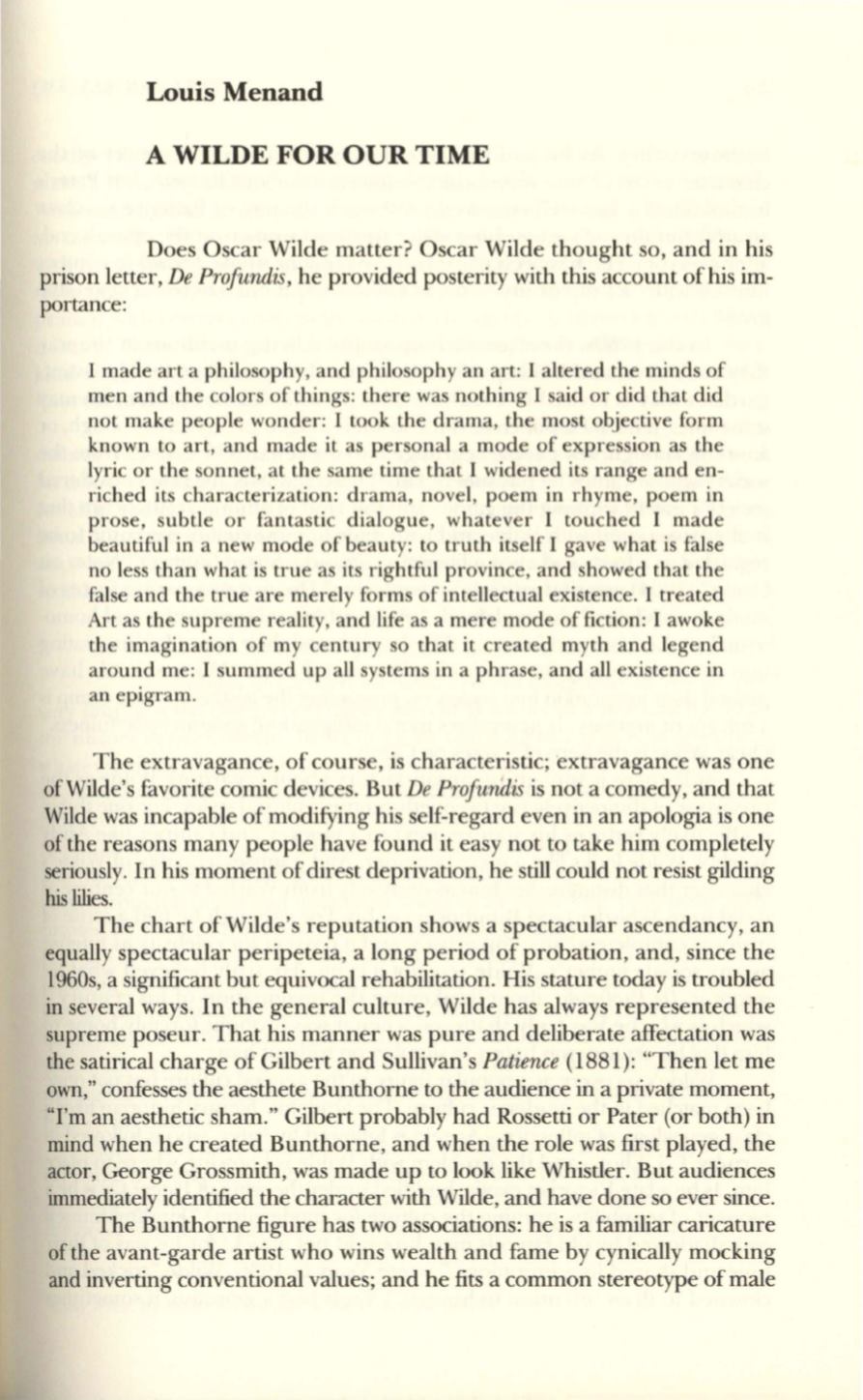
Louis Menand
A
WILDE FOR OUR TIME
Does Oscar Wilde matter? Oscar Wilde thought so, and in his
prison letter,
De Profundis,
he provided posterity with this account of his im–
portance:
I made art a philosophy, and philosophy an art: I altered the minds of
men and the colors of things: there was nothing I said or did that did
not make people wonder: I took the drama, the most objective form
known to art, and made it as personal a mode of expression as the
lyric or the sonnet, at the same time that I widened its range and en–
riched its characterization: drama, novel, poem in rhyme, poem in
prose, subtle or fantastic dialogue, whatever I touched I made
beautiful in a new mode of beauty: to truth itself I gave what is false
no less than what is true as its rightful province, and showed that the
false and the true are merely forms of intellectual existence. I treated
Art as the supreme reality, and life as a mere mode of fiction : I awoke
the imagination of my century so that it created myth and legend
around me: I summed up all systems in a phrase, and all existence in
an epigram.
The extravagance, of course, is characteristic; ·extravagance was one
ofWilde's favorite comic devices. But
De Profundis
is not a comedy, and that
Wilde was incapable of modifying his self-regard even in an apologia is one
of the reasons many people have found it easy not to take him completely
seriously. In his moment of direst deprivation, he still could not resist gilding
his
lilies.
The chart of Wilde's reputation shows a spectacular ascendancy, an
equally spectacular peripeteia, a long period of probation, and, since the
1960s, a significant but equivocal rehabilitation. His stature today is troubled
in several ways. In the general culture, Wilde has always represented the
supreme poseur. That his manner was pure and deliberate affectation was
the satirical charge of Gilbert and Sullivan's
Patience
(1881): "Then let me
own," confesses the aesthete Bunthorne to the audience in a private moment,
''I'm an aesthetic sham." Gilbert probably had Rossetti or Pater (or both) in
mind when he created Bunthorne, and when the role was first played, the
actor, George Grossmith, was made up
to
look like Whistler. But audiences
immediately identified the character with Wilde, and have done so ever since.
The Bunthorne figure has two associations: he is a familiar caricature
of the avant-garde artist who wins wealth and fame by cynically mocking
and inverting conventional values; and he fits a common stereotype of male


